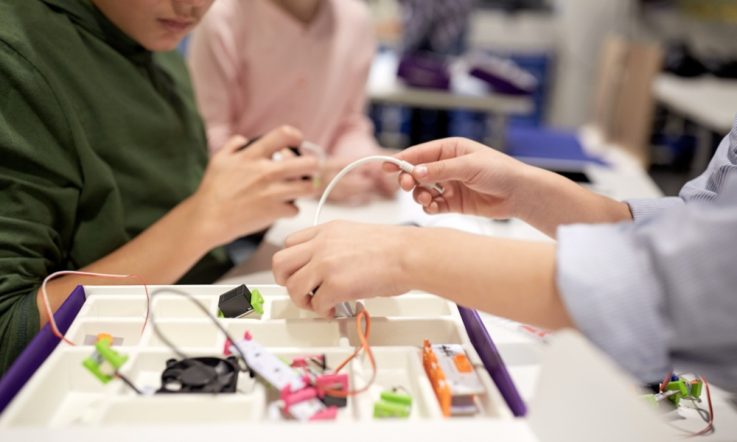School leaders have always played an important role in teachers’ learning. While school leadership in the 20th Century relied on printed paper and face-to-face learning in ‘private’ classrooms, the 21st Century challenges leaders to perform in very different ways.
Successful leaders continue to identify and model best practice, transform school cultures and support the learning of teachers and students. However, many leaders are now embracing the digital age by becoming learners within diverse online learning communities. As expert Alec Couros (2010) notes, it’s through these online learning communities, teachers can ‘form and negotiate the connections they need to sustain long-term learning for themselves and for their students.’
Contemporary times present new opportunities for school leadership. Web-enabled apps and mobile devices allow anytime/anywhere access to relevant information sources and educators across traditional geo-political divides.
For example, content aggregation and social media provide leaders with access to a wide range of information sources outside of traditional school- and system-based networks. Through their Personal Learning Network (PLN), educators are now able to use technology tools to construct and manage a personalised online network of people and information relevant to their needs.
Why connected leaders matter
When faced with the challenges and opportunities of the 21st Century, each leader’s capacity to network is now more important for their school’s development than ever before.
While the relationship between leading, learning and managing change is not new, the complexities of the contemporary school environment are transforming the nature of leadership, with many education communities now calling for networked school leaders who are able to more seamlessly connect learning opportunities across different contexts. However, while the potential of the network to transform learning is becoming more and more apparent, the realities of the school environment present barriers in the way of realising its potential for learning both within and beyond the classroom and staffroom walls.
The Connected Communities 21 Project (CC21) was developed as a research and professional learning partnership between Macquarie University and the New South Wales Department of Education and Communities, running as a year-long project in 2013. A collective case study of 17 schools in Northern and Western Sydney, the project explored how leaders approach change when confronted with the pressures of adopting new technologies and re-thinking pedagogies for a digital age and changing curriculum.
Each participant was identified by their school community as either a technology innovator or as someone disposed towards learning about innovating with technology. Schools were asked to submit expressions of interest and successful schools received funding that leaders then used to support professional learning with the pedagogies and technologies needed to address the Australian Curriculum.
CC21 school leaders across the 17 schools approached challenges differently. While some schools focused on technologies that were currently in place, others used their project as an opportunity to acquire and explore new technologies. In particular, growth in use of tablet devices by teachers and students was clear; 81 per cent of participating school leaders now own and use tablets for professional learning, and the majority of CC21 schools used project funds to purchase and trial iPads in the classroom.
The results also indicated that to make effective use of iPads as a learning tool, many CC21 schools are turning to popular instructional models. When speaking in relation to the model of inquiry-based learning and the use of iPads for fieldwork in Stage 2 Science, one school leader in particular states: 'It’s always been fundamental, like a part of our school... but it’s actually been a lot easier, having the technology, to go and do inquiry-based learning now…’
Professional learning
Just as professional learning is becoming more mobile, how teachers are choosing to learn represents a recognisable shift away from the traditional staff development day or training program.
Technology is playing a huge role, as many leaders draw on a range of online information sources and communities to support their learning. As one CC21 principal notes: ‘You can’t just set a direction and say “good luck with that” ... You must think strategically about how you're going to support staff and the different dimensions to the support.’
On average, participating CC21 school leaders are spending 12.1 hours per week in their professional learning outside of the traditional school walls, with the majority of this time (6.5 hours, or 53.7 per cent) spent searching for and reading online information relevant to their teaching context.
While encouraging, these results suggest there is further work to be done. As they continue to connect and engage with their PLN, school leaders need to be encouraged to become active creators with ICT, sharing their ideas through multiple modalities and within diverse communities of educators.
The findings also suggest that unstructured release time represents one of the most important elements in teacher professional learning. With over 47 per cent of project funds across 82 per cent of participating schools spent on teacher release - and only a very small portion of this time allocated to formal training programs - school leaders are now opting for technology-supported learning in addition to traditional forms. While these less structured forms of professional learning present challenges, they can be liberating, particularly where the principal of the school takes an active role. Amongst CC21 schools, several principals used social media, blogging and mobile apps to share learning with their colleagues.
For contemporary schools, finding effective ways to leverage the technology tools available for professional learning and overcoming the contextual constraints that exist are ongoing challenges.
As many schools explore technology’s potential to transform learning, the participation of school leaders in this learning dynamic is essential. By encouraging leaders to connect with relevant information sources and professionals beyond the classroom walls, we are taking an important step in equipping schools for the future.
To find out more about the work of the Macquarie ICT Innovations Centre, visit http://macict.webfactional.com/
Do you share your ideas with the wider education community? How?
As a school leader, are you taking an active role in staff professional learning?



